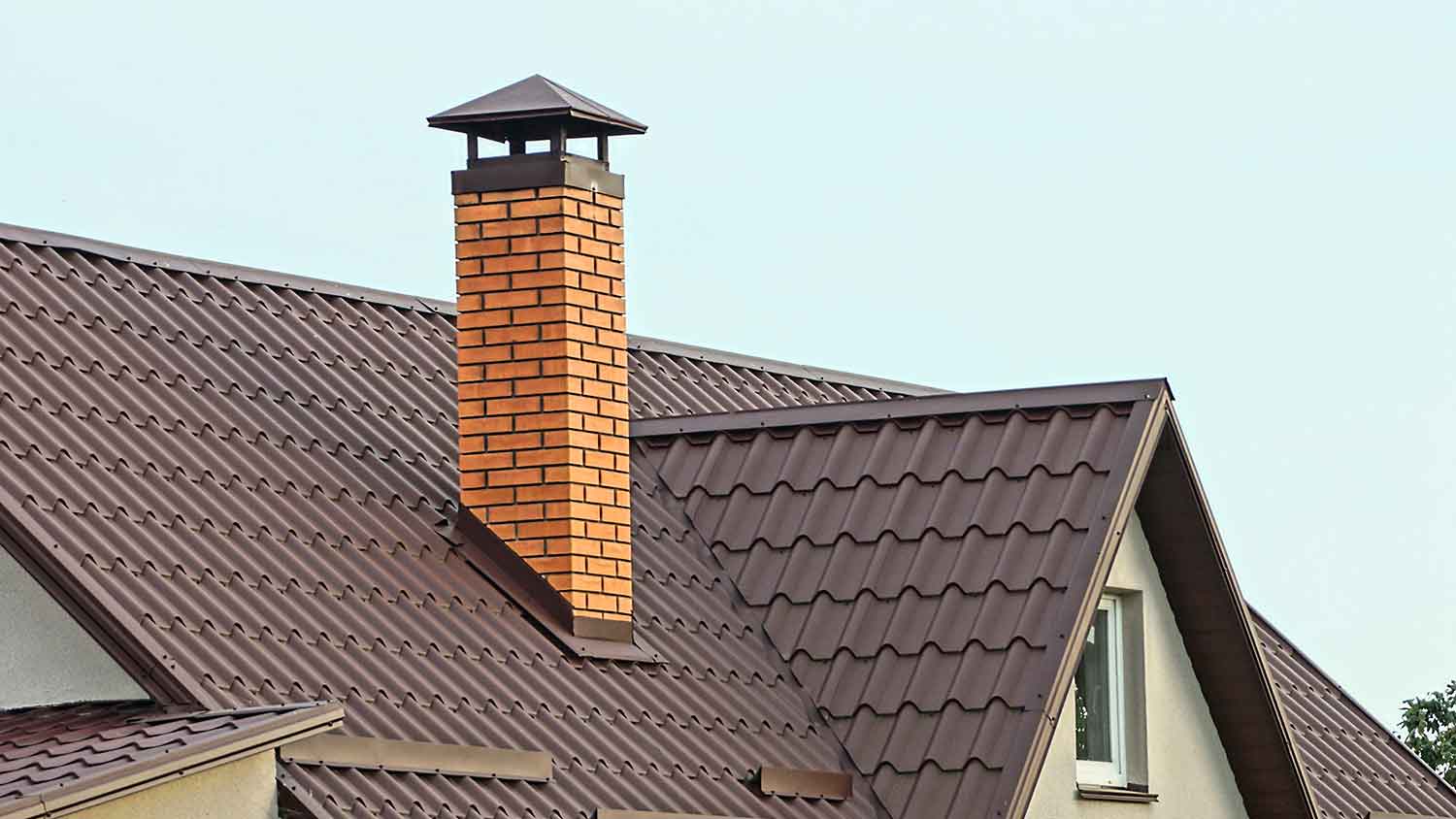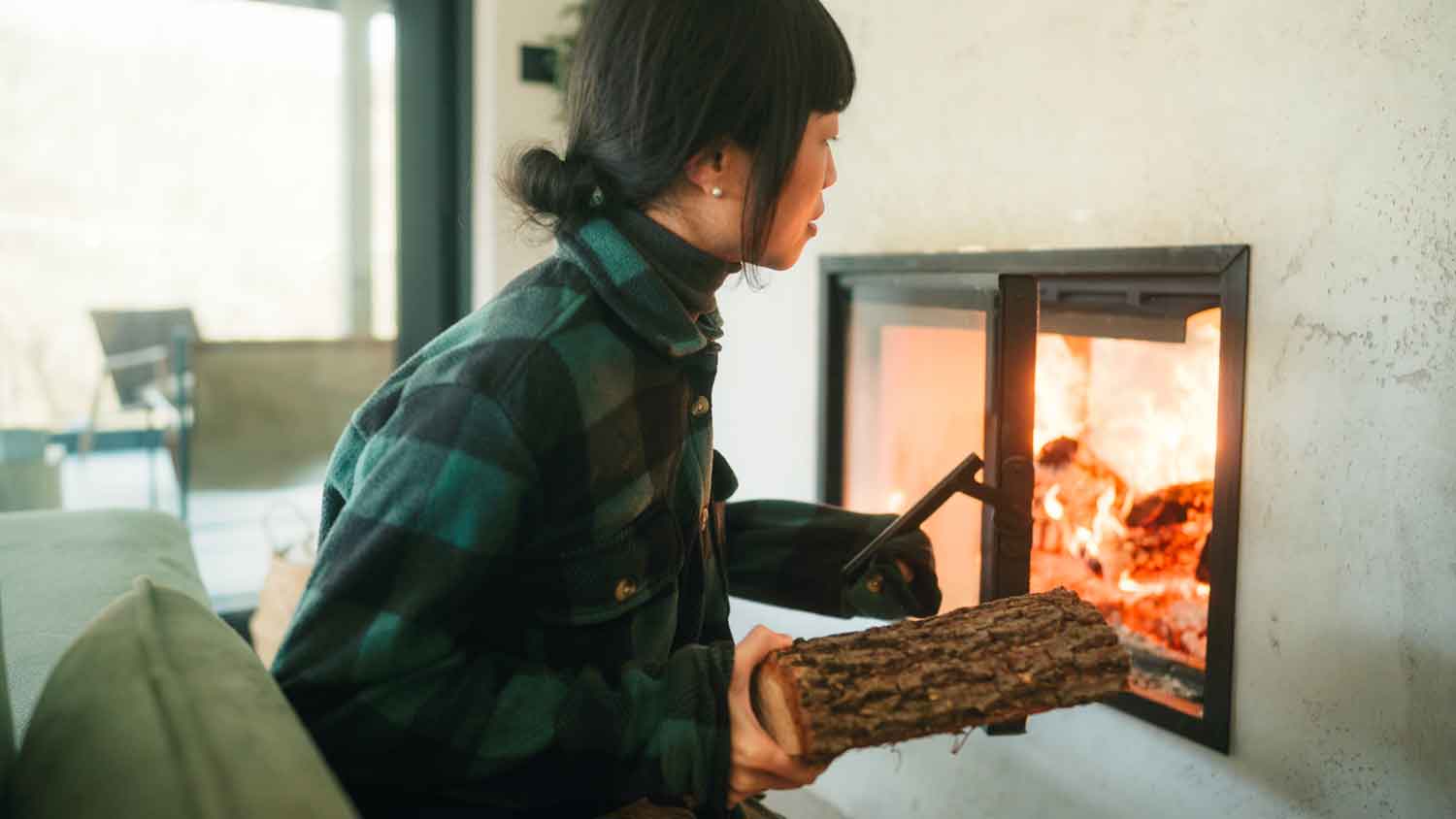
If you’re experiencing chimney airflow problems, a new damper may be in order. Use this guide to learn what goes into your chimney damper replacement cost.
Get rid of this gunky by-product of cozy fire


Every chimney needs a little TLC to operate safely. One of the biggest concerns that should be on your radar is creosote buildup. It's a sticky, flammable substance that, if left unchecked, can be a severe fire hazard. Here, we review how to remove creosote from a chimney flue so you can enjoy your fireplace safely.
Creosote buildup is common in wood-burning fireplaces that do not have their concrete, brick, clay, stone, or metal chimney flues cleaned annually. The buildup happens over time when moisture and gases cool in the chimney. Burning unseasoned or damp wood and poor ventilation from a malfunctioning chimney damper can speed up this process.
Creosote is a flammable residue that builds up due to incomplete combustion and can cause chimney fires if not cleaned regularly. Hire a chimney sweep to remove creosote build up at least once per year—or more frequently if you use your fireplace often.
Annual chimney cleaning will eliminate creosote buildup. The average cost to hire a chimney sweep professional is $250, but the exact price depends on your location and the extent of the cleanup. Having a chimney repair specialist inspect your flue is also a good idea to ensure no deterioration impacts your chimney’s structure integrity. The average cost of a chimney inspection is $450.
Creosote buildup has three stages, starting with a thin layer of black or brown flaky soot. If left unchecked, it progresses to the second stage, where the creosote becomes sticky and tar-like, clinging more stubbornly to the chimney walls. In the final stage, creosote hardens into a thick, shiny, glassy layer that can be very difficult to remove and is highly flammable.
A common sign of creosote buildup is a strong, smoky odor resembling a campfire, even when your fireplace isn't in use. Additionally, you may notice reduced airflow, which can make it harder to start a fire or cause smoke to linger inside your home.

The best removal method depends on how much buildup you're dealing with. We don’t recommend DIYing any chimney work, especially when unsure how much of this hazardous material you may find inside. Call a local chimney cleaning pro unless you’ve done this work before.
A chimney brush is an effective tool for removing light creosote buildup in many different types of flues. They feature stiff metal or plastic bristles that effectively scrape away the loose soot and thin creosote layers clinging to chimney walls.
Chimney brushes come with extendable rods that screw together. Attach your brush to the first rod, and have additional rods ready to extend the reach as needed.
Before you start cleaning, place drop cloths around the fireplace to catch debris. Remember, creosote is toxic. Wear safety gear, including an N95 particulate respirator, work gloves, long sleeves and pants, and goggles.
If you can safely access the roof, begin by lowering the brush into the chimney from the top. Push the brush down, scrubbing back and forth, and gradually add more rods as you descend. Cover the entire flue by moving the brush around the walls.
If accessing the roof isn't possible, you can clean your chimney from inside the fireplace. Push the brush upward into the chimney using the same scrubbing motion as the top-down method while adding rods to reach higher sections. Keep in mind that this approach is much messier.
If you use your wood-burning fireplace or stove often, your chimney may have moderate creosote (stage two) buildup, requiring a chemical cleaner. Chemical creosote removers come in different forms: powders, sprays, and logs. For the best results, follow the manufacturer's instructions, but here’s a general overview of how they work:
Scoop powder on top of hot embers in your fireplace. The heat activates the chemicals, breaking down the creosote in the chimney.
Spray products on embers or an existing fire—some formulas can pretreat wood before tossing it in the flames.
Creosote logs work like regular logs—just let them burn completely. The chemicals released during the fire will breakdown the creosote into a flaky, easier-to-remove substance.
Whichever method you pick, once the fire has completely burned out and the chimney has cooled, follow up by using a chimney brush to remove the softened creosote. Brush the chimney's walls just as you would when dealing with light creosote.

A few preventive measures can make a big difference in reducing future creosote buildup.
Start by burning only seasoned hardwoods, like oak, which have a low moisture content and burn hotter. Softwoods like pine burn cooler and produce more creosote-forming smoke.
Steer clear of slow-burning, smoldering fires. Fires that burn at lower temperatures create more smoke and unburned gases, which stick to the chimney walls. Instead, ensure your damper is fully open to maintain a steady fire with proper airflow. This helps vent smoke more effectively and reduces the chance of creosote forming.
Finally, regular inspections and cleanings by a professional chimney sweep are essential. Even with proper precautions, an annual cleaning is necessary for safe fireplace operation.
Removing creosote from your chimney flue is dirty business. While the DIY approach saves money, this project is unsuitable for people with respiratory issues.
Furthermore, only chimney cleaning professionals should handle stage three creosote buildup because the material is highly flammable. They have the specialized tools and knowledge to safely clean chimney flues without risking your home or health—it’s worth the cost.
From average costs to expert advice, get all the answers you need to get your job done.

If you’re experiencing chimney airflow problems, a new damper may be in order. Use this guide to learn what goes into your chimney damper replacement cost.

Sealing your chimney is one of the most affordable ways to prevent water from penetrating the bricks. This guide breaks down the cost to seal a chimney.

Replacing your chimney increases home value and prevents hazardous structural damage. Learn how much to budget for chimney replacement costs.

Getting annual chimney inspections is essential for maintaining a functioning chimney. Prepare for a chimney inspection by understanding what to expect and how to prepare.

Chimney leaks are no joke, as they can lead to mold and water damage. Here’s who to call for a chimney leak to get this issue fixed quickly.

Chimney problems can put a damper on your warm and cozy nights. We’ll explain common chimney issues you might uncover and how to resolve them here.